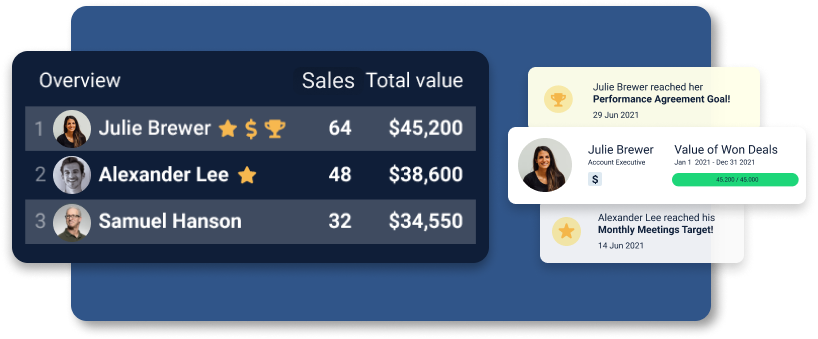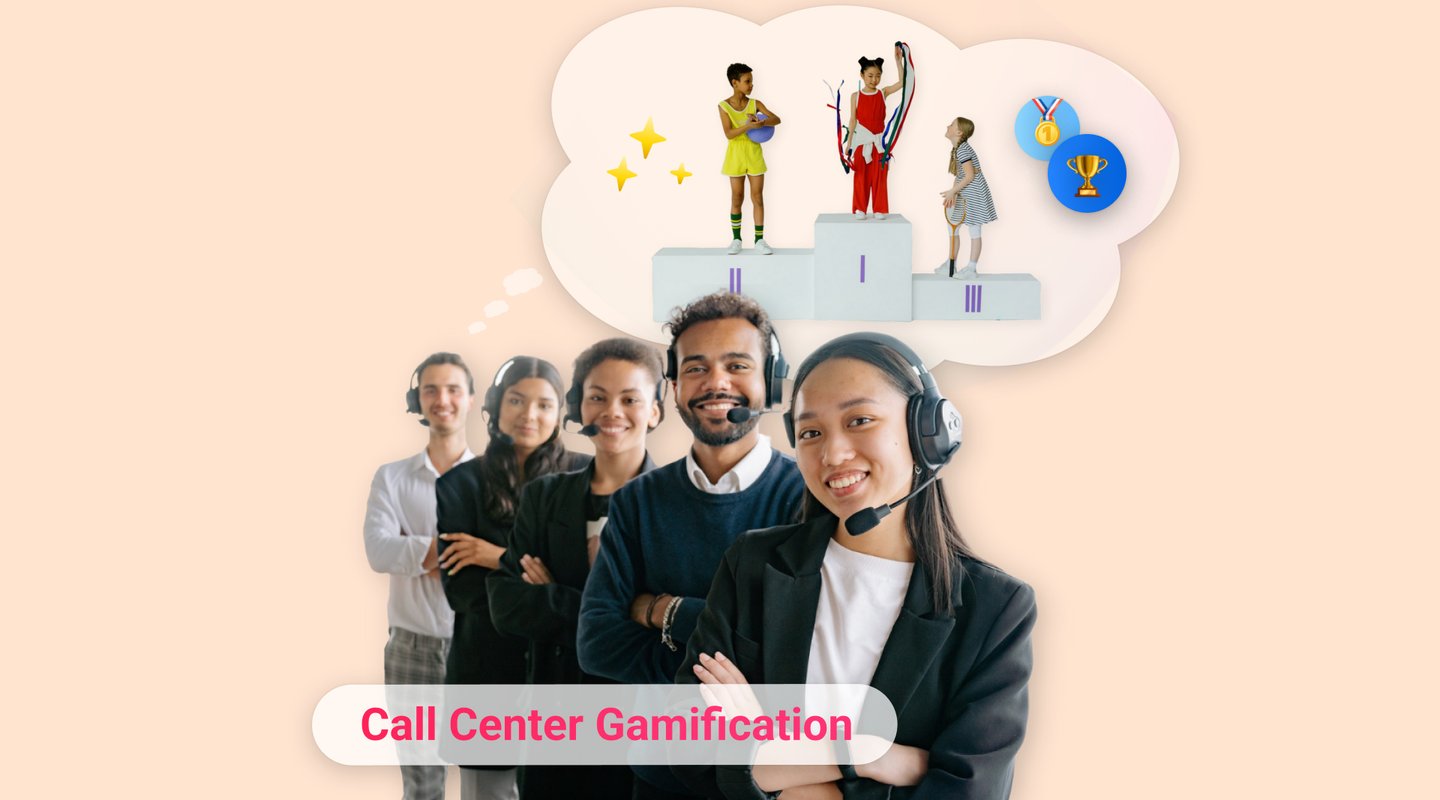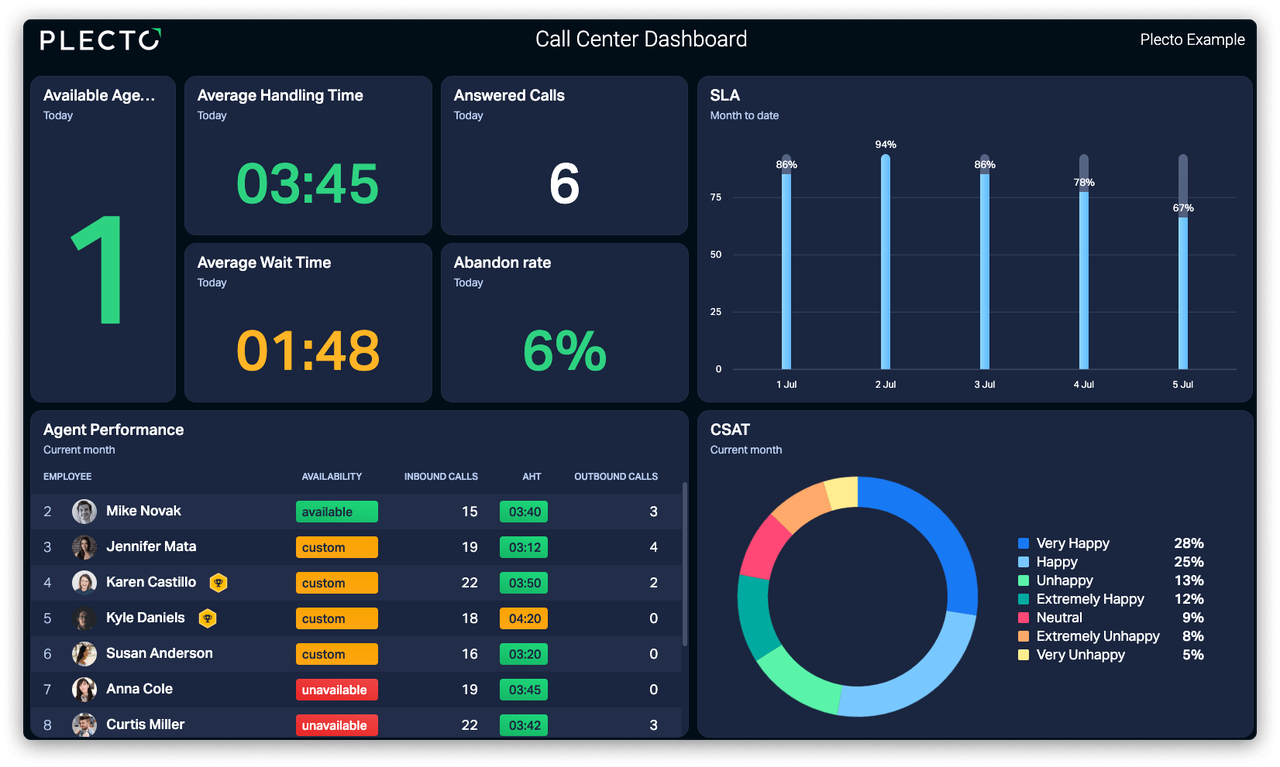Call centers are well-known as particularly difficult work. In 2016, the average longevity of a US call center employee was 3 years, with a turnover of 33%. The pandemic further increased demands on these frontline employees, and companies have begun to look for new ways to retain and motivate their call center staff. As they look into how to improve call center customer service and job satisfaction, many companies are turning to gamification.
According to Oracle’s Customer Experience Impact Report, 89% of consumers turned to a competitor product or service following a negative customer experience. Delivering stellar customer service is statistically one of the easiest ways to retain customers while providing lackluster service is, unsurprisingly, the easiest way to lose customers.
Read on to find out the significance of call center gamification in delivering excellent customer service – and why it works. Then try out some of the 5 ways to use call center gamification we’ve outlined below.
What is call center gamification?
Employers have realized that frequent pats on the back and the occasional call center contest aren’t enough to retain employees. As a result, most customer-centric companies are introducing gamification as a new way of measuring performance, providing feedback, and motivating call center employees. Data suggests that companies using gamification have 10% higher customer satisfaction rates vs. companies that don’t.
Gamification adds an engagement layer to existing call center processes via game-like elements that boost employees’ interest and excitement around mundane tasks. The byproduct is the cultivation of specific behaviors that drive positive results alongside a fun and engaging workplace that supports and motivates employees to consistently hit their KPIs and deliver the highest levels of customer service.
When considering how to improve call center customer service, it’s important to understand that gamification isn’t the same as a call center contest. Call center gamification is an ongoing initiative that applies proven game mechanics to everyday operations. What do all games have in common? There are rules and usually some combination of points, challenges, levels, and rewards.
Call center gamification often uses a combination of points, badges, leaderboards, and instant notifications. We’ll take a closer look at each of these later. For now, it’s most important to understand that gamification is a simple way to keep call center employees engaged, motivated, and eager to provide the best possible service.
Why does call center gamification work?
Research shows that employee happiness is 89% higher in a gamified workplace, and 69% of employees say that they’d stay with an employer for more than three years if the company used gamification in its operations. With stats like that, today’s managers can’t afford to overlook the potential power of gamification in high-turnover settings like call centers.
A successful call center gamification strategy appeals to customer service reps’ desire for achievement, recognition, and rewards – intrinsically or extrinsically driven. When considering how to improve call center customer service, the focus most often involves targeting employee satisfaction, as this is what drives their motivation and ultimately their performance. Introducing gamification adds an element of fun that creates an engaging, cooperative, supportive, and solution-oriented culture that drives competence, results, and personal gratification.
Call center gamification works because it:
- Reinforces and rewards “good behavior” (e.g., high customer satisfaction ratings)
- Promotes continuous improvement by tracking reps’ real-time progress against KPIs
- Ignites people’s competitive nature to drive results
- Provides a sense of achievement
- Fosters teamwork, collaboration, and a sense of community
Intrinsic and Extrinsic Motivation Factors in Call Center Gamification
When designing a call center gamification program, it’s essential to understand that people are inherently intrinsically or extrinsically motivated – or somewhere between the two. This is important because each responds to different motivation tactics, and understanding each employee’s main motivators is the key to unlocking their best performance.
Intrinsically motivated employees, who are mostly motivated by intangible things like recognition and fulfillment, will be driven by true enjoyment of their work and helping people. These employees consistently achieve high customer satisfaction scores, and they’re always looking for ways to build better customer rapport and provide better service.
Call center reps who are extrinsically motivated are driven by tangible rewards, like bonuses and prizes. Dangle a carrot in front of them, and they’ll gladly pull out all the stops to provide dazzling levels of service and reap the rewards.

Pros & Cons of Call Center Gamification
Like most things, call center gamification has its pros and cons. Enjoy the benefits, and take note to use the following ways to avoid some of the common mistakes that can arise when companies first endeavor to implement call center gamification into their performance management strategy. Introducing gamification and then removing it can have catastrophic consequences on employee morale, so it’s important to prepare so your call center performance can flourish!
3 Benefits of Call Center Gamification
Let’s start with three potential benefits of launching a gamification program in your call center.
1. Continuous Real-Time Feedback
Gamification provides continuous feedback on performance on important KPIs. With leaderboards, instant notifications, and points, employees working in gamified environments always know how they’re performing. Most gamification elements are based on real-time metrics, so feedback is timely and continuous.
2. Stronger Incentives
Traditionally, performance reviews happen once or maybe twice per year with little to directly motivate employees in between. Gamification’s continuous feedback culture gives managers more options to provide incremental incentives that continuously motivate better performance – and keep reps striving to provide excellent customer service.
3. Less Hands-On Time
Workplace gamification uses software that automatically tracks KPIs, which is the lion’s share of work when it comes to running a typical call center contest. Once you’ve chosen your gamification elements and set your metrics, the process is largely automated. This means more time for you to spend on providing world-class customer service!
3 Pitfalls of Call Center Gamification to Avoid
Here are four things to keep in mind to avoid common pitfalls of introducing call center gamification.
1. Unhealthy Competition
While a little competition can be healthy, it can also bring out a negative side of people. Gamification isn’t meant to create a lone-wolf culture. Leaderboards in particular can be detrimental to lower-performing employees by highlighting their deficiencies while giving others a chance to gloat. It’s crucial to keep a close eye on morale to ensure there aren’t any unintended consequences to something that’s meant to be fun and boost your whole customer service team’s performance.
2. Too Much of a Good Thing
It’s easy to get a taste of success and then go overboard. Gamification should always be tied to business goals. Gamifying everything, especially tasks customer service reps already struggle with can become tedious and have the opposite of its intended effect. While gamification can be a powerful tool, it’s not a magic wand that will suddenly make the most awful tasks enjoyable. Pretending otherwise will dilute its effects in other areas. Don’t forget to switch it up every so often to avoid it becoming rote and less effective.
3. Forced Participation
Almost everyone has participated in a company event where management’s heart was in the right place, but they would’ve rather been doing almost anything else. Everyone has a different idea of “fun,” and though gamification is statistically well-received, not everyone will see it as a positive. Therefore, it has to be worth your customer service team’s while – and at least that they see it this way. Do this by framing call center contests or gamification positively or encouraging participation by providing incentives to reward the winner. It doesn’t have to be anything fancy, just make sure it’s valuable enough to make it worth your customer service rep’s while!
As long as you’ve prepared your gamification strategy with these three considerations in mind, you are setting yourself up for gamification success! You can read more about our top 10 gamification mistakes to avoid in this article.
How to Choose Call Center Gamification KPIs
93% of customers say they’re more likely to give repeat business to companies that provide exceptional customer service. So while customer service can be one of the company’s hardest jobs, it’s also one of the most important. If you’re thinking about introducing gamification to your call center department, make sure to link it to business goals. Your first step should be to identify the KPIs that you want to target.
Here are some common individual call center KPIs:
- Number of calls handled
- Average handle time
- First contact resolution
- Customer satisfaction ratings
To address both extrinsically and intrinsically motivated customer service reps, many call centers tie these metrics to points, which count toward badges or can be traded for tangible rewards. Leaderboards and instant notifications for top achievements can also help to keep motivation high and encourage call center reps to strive for the highest service levels.
To build camaraderie and promote a “we” instead of “me” call center culture, some managers also incorporate team-level KPIs, like these:
- Average hold time
- Average time to answer
- Call rate without escalation
These metrics are best tied to group incentives, like free lunch or other tangible perks.
Build your first dashboard.
Start your 14-day free trial today
5 Best Call Center Gamification Tactics
Here are five call center gamification tactics that can turn everyday tasks into a game-like experience that boosts engagement, drives performance, and stokes a desire to provide world-class service.
1 — Leaderboards
Leaderboards are broadly considered the gateway to gamification. In fact, 51% of employees working in gamified environments say that leaderboards are part of their daily work. Leaderboards are an excellent first step in implementing call center gamification because they’re easy to set up, and people immediately understand them. These are a great tool to get your customer service reps leap-frogging to the top of the board while improving important call center metrics like time to answer and average handle time. To up the ante, some call centers display their leaderboards on flat-screen TVs around the office where everyone can see them.
Johan Hilding, CEO and Co-Founder of Swedish home & digital security services company, Förebygg, explains the positive effect of having data visualization dashboard leaderboards in the office:
"The dashboard also increases the hype in the office because, for every sale we do, we see that the scoreboard is getting greener and greener – and when the last sale comes to close the budget, the whole office explodes!"
Johan Hilding
CEO & Co-Founder of Förebygg
2 — Instant Notifications
We’re in a “now” generation where instant gratification has become a way of life. Instant notifications are one of the easiest and most effective ways to create excitement throughout the workday. Give immediate kudos by displaying instant notifications on your employees’ computers whenever someone gets a perfect customer service rating. The best part about recognizing individual achievements with real-time notifications, like these, is that your whole team can get involved – so just watch the atmosphere in the call center erupt!
3 — Points
59% of employees working in gamified environments say they’ve received points via an app or software. Awarding points for highly desired outcomes encourages employees to create those outcomes. Tie points to specific call-related targets (like who completes the most calls in a month) and display them on leaderboards, have them count toward badges (see below), or let employees trade them for rewards like gift cards or paid time off.
4 — Badges
71% of employees surveyed cited badges as the most common gamification element used in their workplace. Think of these as a grown-up version of scouts badges. Award them to recognize mastery or progress toward a goal.
Badges are particularly effective in recognizing and celebrating the achievements of intrinsically motivated employees who thrive on recognition. Gamification software makes it easy to award badges. Just determine which KPIs are most important to the team and set the badges accordingly. Assign a smiley badge to the customer service rep who receives the highest customer satisfaction rating each day, and watch the badge jump from rep to rep as they battle it out to take the ultimate top spot. Where there’s a reason to celebrate, there’s a badge – get creative with it, and start celebrating success together!

5 — Hidden Prizes
A follow-on from call center contests, the secrecy and anticipation around hidden prizes are a great way to make gamification the talk of the office. The premise is that you announce hidden prizes for going the extra mile, without giving specifics of what constitutes “the extra mile.” This is particularly effective in motivating reps to deal gracefully with difficult customers. When someone goes above and beyond to deliver extraordinary service, make sure to reward them and let everyone know what they’ve done. This is a fantastic tool that satisfies both motivation factors while keeping the need to deliver outstanding service at top of mind.
Still curious about call center gamification?
If you’re still curious about gamification, why not read Plecto’s free 40-page guide that includes everything you need to know about gamification and why it works! With 13+ real-world examples and expert contributions condensed into three straightforward steps to follow to build a performance-driven culture, you'll be ready to implement your knowledge directly into your call center workplace and start outperforming all your quarterly targets!




